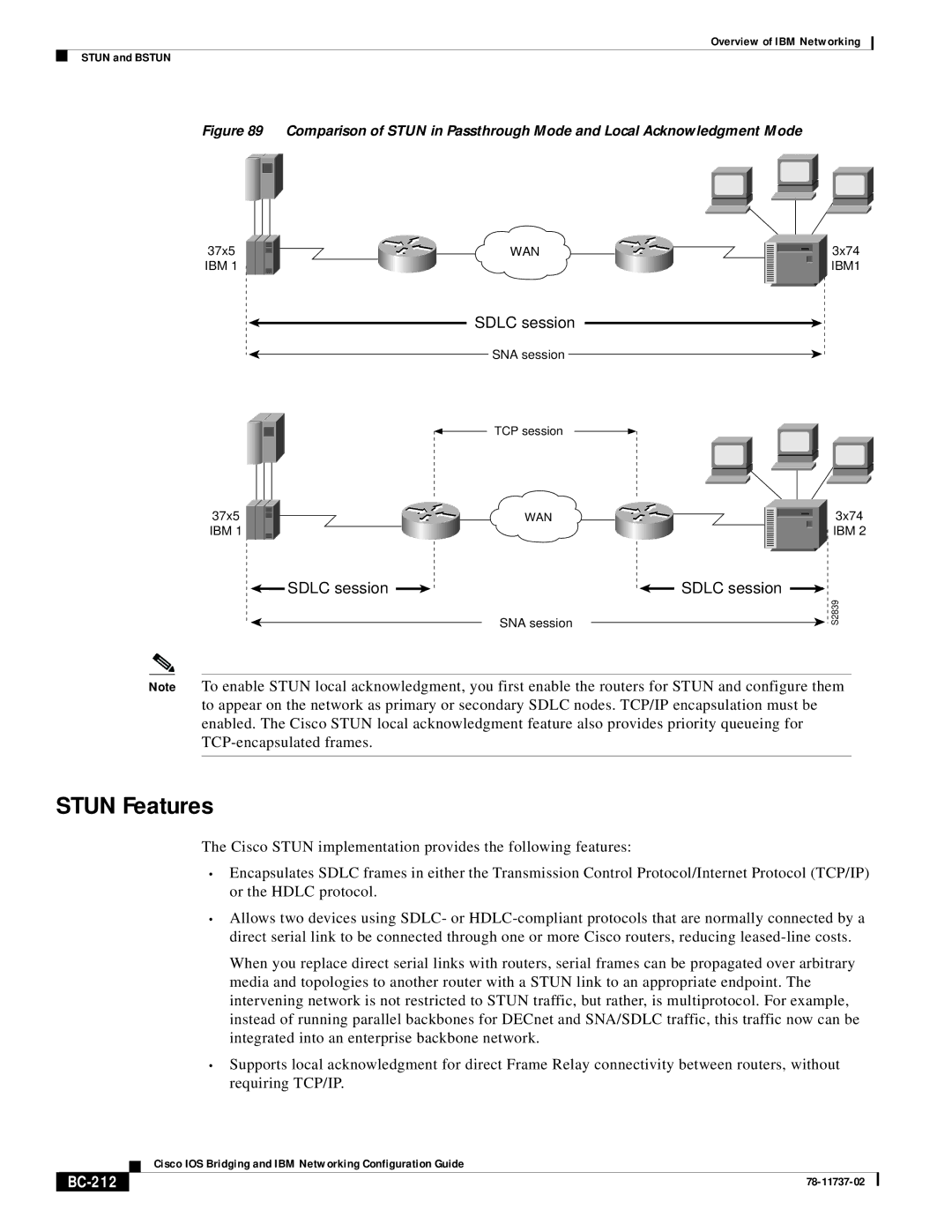
Overview of IBM Networking
STUN and BSTUN
Figure 89 Comparison of STUN in Passthrough Mode and Local Acknowledgment Mode
37x5 | WAN |
IBM 1 |
|
SDLC session
SNA session
TCP session
37x5 | WAN |
IBM 1 |
|
3x74
IBM1
3x74
IBM 2
SDLC session
SNA session
![]() SDLC session
SDLC session ![]()
S2839
Note To enable STUN local acknowledgment, you first enable the routers for STUN and configure them to appear on the network as primary or secondary SDLC nodes. TCP/IP encapsulation must be enabled. The Cisco STUN local acknowledgment feature also provides priority queueing for
STUN Features
The Cisco STUN implementation provides the following features:
•Encapsulates SDLC frames in either the Transmission Control Protocol/Internet Protocol (TCP/IP) or the HDLC protocol.
•Allows two devices using SDLC- or
When you replace direct serial links with routers, serial frames can be propagated over arbitrary media and topologies to another router with a STUN link to an appropriate endpoint. The intervening network is not restricted to STUN traffic, but rather, is multiprotocol. For example, instead of running parallel backbones for DECnet and SNA/SDLC traffic, this traffic now can be integrated into an enterprise backbone network.
•Supports local acknowledgment for direct Frame Relay connectivity between routers, without requiring TCP/IP.
| Cisco IOS Bridging and IBM Networking Configuration Guide |
|
